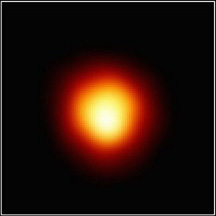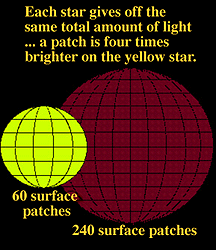You might also be interested in:

If you look around our galactic neighborhood, you will soon realize that stars come in different colors and sizes. Stars can be blue, white, yellow, orange or red. They are usually so faint however, that
...more
The stars in the night sky are points of light. They all look about the same size. But they are so far away that we can't really see how big they are. There is, however, one star that is very close to
...more
Why are stars born in such a wide variety of sizes and colors? Are there limits on how large or how small a star can be? How do normal stars change into black holes and neutron stars? And how do we know
...more
This is an image of the supergiant star, Betelgeuse, taken by the Hubble Space Telescope. Betelgeuse is in the constellation of Orion, a familiar site from the Northern Hemisphere. But look closely at
...more
You can sense a star's temperature -- not with your fingers, but with your eyes! The color of the star tells you how hot it is. Have you ever looked inside the toaster as the wires heat up to make your
...more
The wire is a black body. Anything that absorbs all the radiant energy (heat and light), that strikes it, is a black body. Your black baseball cap on a hot summer day is a good example. All of the sunlight
...more
It definitely is not black. Almost all of the photons of light that the sun produces in its core are absorbed by the sun's thin outer layer, the photosphere. Because it absorbs all the radiation that
...more
When we apply this to stars, we find out a lot of interesting things about them. By observing the color of a star, we can figure out its temperature. If we know how far away the star is, we can calculate
...more











